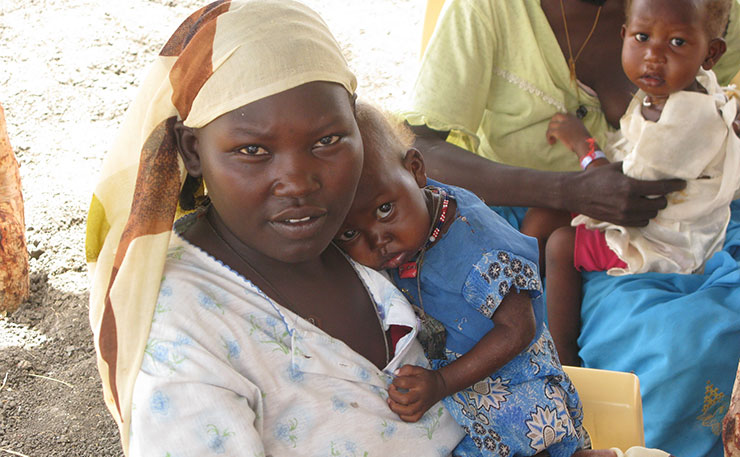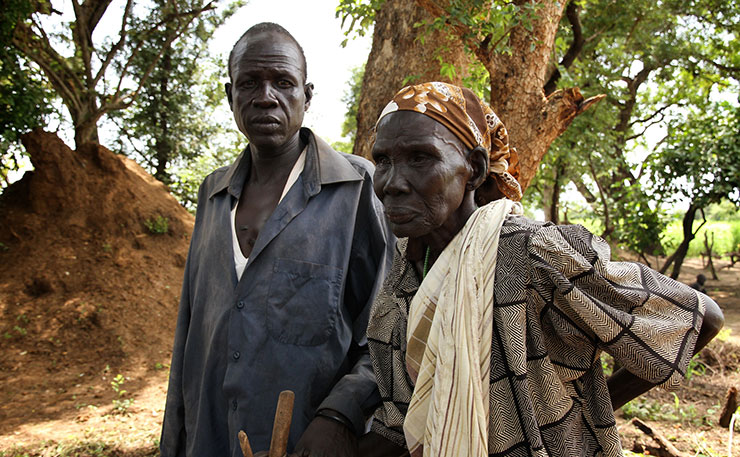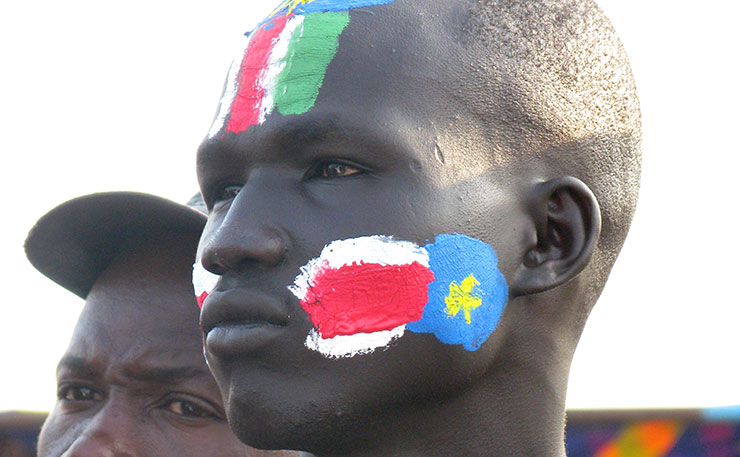A nation gripped by war is fighting a battle within that it can’t possibly win. Giacomo Bianchino explains the history of the conflict in South Sudan, and the futility of the struggle.
By now, we must be at the point of asking why the Sudanese seem condemned to war. Over 50 years, the country rent itself in half.
Two civil wars destroyed any real possibility of reconciliation between the self-identifying ‘Arabs’ in the North and the ‘Africans’ of the South. Since the ceasefire in 2011, the tensions within and between the two countries haven’t evaporated.
Despite the cessation of overt warfare, the aggression has splintered into a swathe of sinister directions.
The South Sudanese civil war erupted in 2013. In this case, it was not Arab oppression that drove the country into conflict. In fact, it was the dramatic escalation of tribal tensions that caused the decay of a ‘peace’ that lasted a little over two years.
Salva Kiir, an SPLA leader and representative of the ethnic Dinka tribe, was elected in 2005 to lead the South Sudanese liberation movement.
In 2011 he became its first president. By December 2013, he had admonished, disgraced and dismissed his vice president of eight years, Reik Machar.
Machar happens to be of the Nuer tribe: the second largest tribal group in South Sudan. The Dinka and Nuer have vied for economic and political power for decades, and this explicit denigration was symbolic and aggressive.

Since then, the transferral of conflict from the Sudan/South Sudan dichotomy to the Dinka/Nuer has become a tragedy on a national scale.
Since 2013, the South Sudanese war has claimed casualties in the tens of thousands. The displaced persons’ count numbers in the millions. But it has even greater tragic significance on an historical scale. With the benefit of hindsight, it’s disturbingly clear that the trauma that the central Sudanese people suffered during the first and second civil wars has become the inherited fate of South Sudan.
The repetition of events that played out during the Second Sudanese War has given the South Sudanese Civil War a significance that goes beyond the political and into the theoretical. Why is Sudan unable to sustain peace? Is the problem one of oppression or competition? What hope is there for unity in the young country?
The answers to these questions are really too complex to reduce to a common origin. The legacy of imperialism and problematic transition from colony to democracy is certainly one consideration. Economic paucity and resource allocation have also driven the conflicts into horrendous material struggles. The expansion of certain ideologies at the cost of minorities is something so universal that we might even infer its lone significance in the struggle.
Yet the themes that are repeated by events in Sudan and South Sudan are most peculiar in their cultural representation. Despite economic and political opportunism, what is truly tragic about the conflict is the stubborn attachment to a divisive ideal. Put simply, this is the project of national self-determination.
In an article for the University of Chicago’s “Ethics” journal in 1967, political philosopher Paul Diesling outlined the perplexities of “National Self-Determination and Foreign Policy.” Calling on a vast array of historical analogies, he represented self-determination as a project of counter-identification. To him, it implied that:
“a nation is a “self,” a unity, and that it wishes to be independent of another nation, an “other” external to it.”
So Vietnam was ‘born’ in opposition to its French occupation; Italy unified from fear of international invasion; American independence was the defined as a lack of British influence.
The inference is pretty logical: one people identifies themselves as the victim of oppression and wants therefore to create conditions where they are no longer persecuted. The tricky part of the equation is the identification of the ‘other’.
Ridding oneself of the oppressor is a difficult task when it is living within the borders of the victim’s country. The idea of an “internal other” allows a cultural group to wage war against other members of the country. It elects a particular ethnic or ideological group as the ‘true’ inhabitants of a country and holds their survival to hinge upon the eradication of all aggressors.
This is the language used by the Northern Arabic population. In 2012, Sudanese President Omar al-Bashir railed against the “black sacks” of the rebellion. According to Nubian refugees, the President routinely sends “African” Sudanese children to fight for his cause. For his administration, the real Sudan is Arab-Islamic.
Yet the war of culture isn’t waged exclusively by the Arabic population. The SPLA in the Blue Nile and Nubian mountains talk of unity under Khartoum. Yet in the refugee camps, they seethe at the thought of Arab power, and forbid the girls to sing anything that sounds remotely ‘Northern’.
For them, the real Sudan is a part of Africa, and people scoff when foreigners refer to their country as Arabic.

Wiyual is Nyakuer Rambang’s only remaining son, as her other three sons were killed in conflict or trying to escape the fighting. IMAGE: Oxfam/Aimee Brown, Flickr).
Choosing one “Sudanese” identity as real is a dangerous move. Indeed, it has cost hundreds of thousands of lives. The problematic relationship between the identity groups that make up the area has fed into a culture of self-negation.
In the Abyei region of the south, for instance, language is closely bound with political agency. Under the Abyei Protocol of 2004, the area is separated politically between North and South Sudan. The division of the Dinka-speaking Ngoc and the Arabic-speaking Missiria has been exacerbated by the political truck that each group happens to hold in the centres of power.
While the Missiria held sway under al-Bashir, Kiir’s Dinka-led administration has tended to advantage the Ngoc at every available opportunity. So the traditional tensions have survived the transition into Southern independence.
Sudan is not simply African, nor Arabic. It is a composite, like many fringe nations. The languages spoken reflect a heritage of conquest, but also of continued cultural identification over thousands of years. The mistake that both sides make is to refuse the inclusion of one another in their national narrative.
The truth is, that when the perceived “self” is won at the expense of the “other”, the real self of the nation is dramatically eroded.
In the North and the centre, there is possibility of unity beneath Islam. The Nubian refugees still sing poems about nostalgia for home, the land and comradery, all prominent themes in traditional Islamic poetry. Yet South Sudan has a strong Christian minority, and a scattered affiliation of adherents to tribal religious systems. In fact, it makes more sense to talk of cultural groups than coherent ideological systems in Sudan.
The modern tensions between Kiir and Machar are more than political or tribal intrigue. They reflect a much deeper cultural antagonism at the heart of Sudanese identity.
The characters in the South Sudanese War are different to those of the old conflict. But the problems are largely the same.
The cultural and political attempts to identify a “true” Sudan can only come at the expense of what is truly Sudanese.
Donate To New Matilda
New Matilda is a small, independent media outlet. We survive through reader contributions, and never losing a lawsuit. If you got something from this article, giving something back helps us to continue speaking truth to power. Every little bit counts.





